How to Build a Rainwater Catchment On a Shed Roof Brooklyn Farm Girl

Keep Your Home Safe from Flooding During Heavy Rainfall CRI
When you look at the numbers, it's surprising how much water you can collect every time it rains. Just a half inch of rain falling on a 1,000-square-foot roof will yield 300 gallons of water. To get an idea how much water the roof of your own house might yield, use the Rainfall Harvest Calculator, above. Rain Barrel Supplies List. 1.

How Rainwater Harvesting Works In Buildings Bproperty
A row home with an 800-square-foot roof might need about 3.5 rain barrels to capture all the rain in a typical storm. That's where a larger system, like a cistern, can come in.

Why Your Roof Leaks in Heavy Rain? Preman RoofingSolar
You can calculate how much water you could potentiall collect from your roof by using the simple calculator below. This will then give you a good idea about the size of water tank you might need in order to maximise your water collecting at home. Simply select your region and enter the size of your roof and you can find out how much water could.

Roof Valley Rain Water Diverter Tests
One inch of rain on a 1000 square foot roof will yield around 600 gallons. So all you need to do is some simple math. Determine the square footage of the area that's connected to your rain barrel and multiply it by 0.6, ( sq. feet x 0.6 = gallons). ex: 1000 sq' x 0.6 = 600 gallons. How much rain you can collect off your roof is determined by.

Is Roofing In The Rain A Bad Idea? (2023 Update)
For example, most rainwater systems collect rain from your home's roof. However, you can also collect rainwater off impermeability surfaces, like your driveway or pavement.. First, let's calculate how much rain a 2,598 sq. ft. home can catch annually. 2,598 x 11.8 x 0.623 = 19,099 gallons. Additionally, we can calculate a yield of 0.8:

7 Reasons Why Your Roof Leaks in Heavy Rain and the Cost to
Water Collected = (Roof Area * Average Annual Rainfall * 0.623) / 1000 * Rain Barrel Size ; Rainwater Harvesting Efficiency = (Water Collected / (Roof Area * Average Annual Rainfall * 0.623)) * 100; Example. Suppose a homeowner has a roof area of 1000 square feet, and the average annual rainfall in their area is 40 inches.
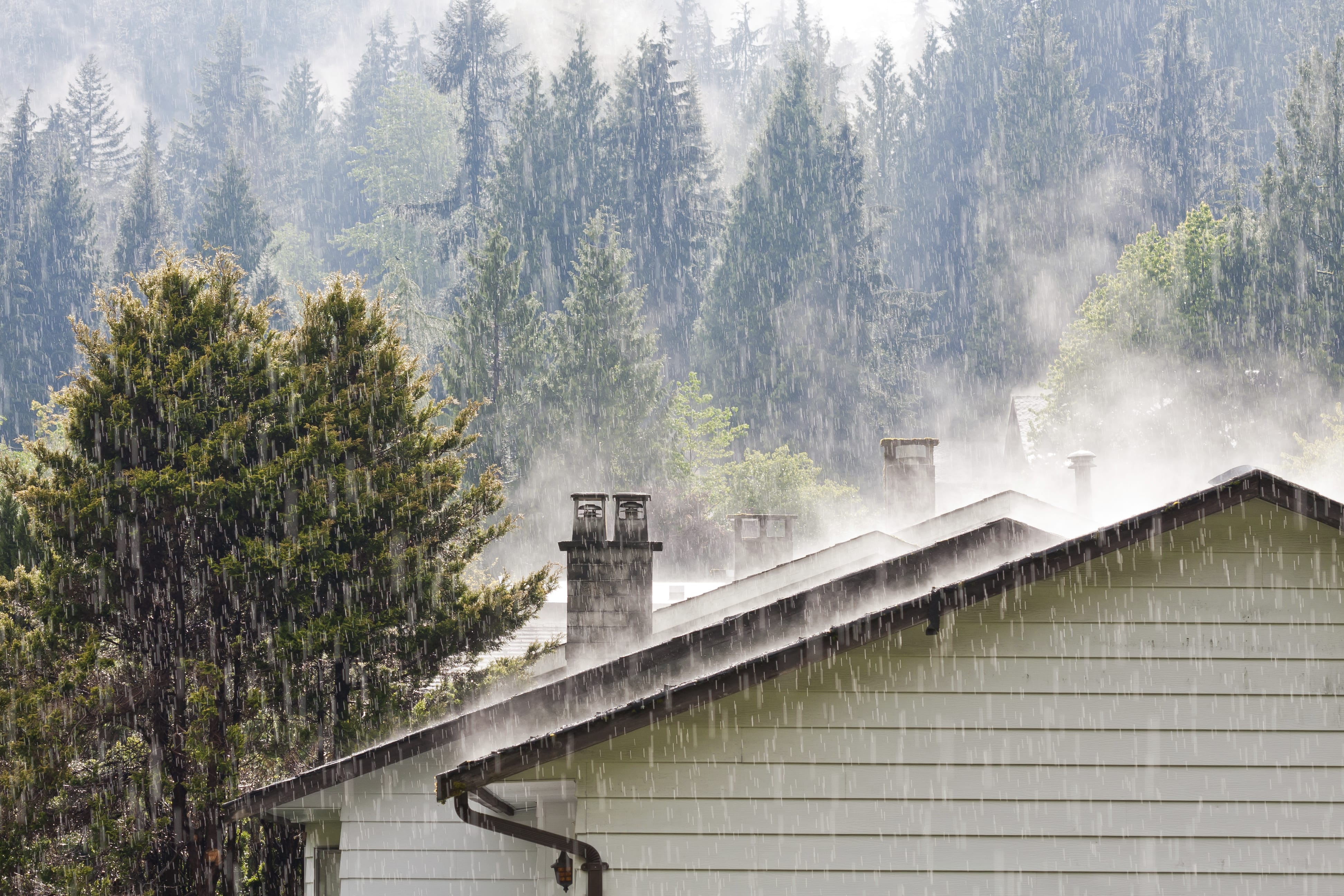
How to Avoid Roof Leaks In Heavy Rain Piedmont Roofing
How it's calculated: {Roof Area in square feet} x {inches of rainfall for your location} x 0.62 = Amount Collected. The equation is made up of 3 numbers: The size of your catchment area. Most likely your roof. The average inches of rainfall for where you live. The average amount of water you can collect from 1 inch of rain per square foot of.

Roofing in the Rain The Consequences and How Roofers Handle Them
Roof Area x Annual Rainfall x Runoff Coefficient = Annual Discharge. But, if you are looking for a quick estimate for your roof without doing the math, here is a good rule of thumb. A standard assessment is that for every inch of rain across a 1,000 sq ft of roofing, the attached water collection system will harvest approximately 600 gallons of.
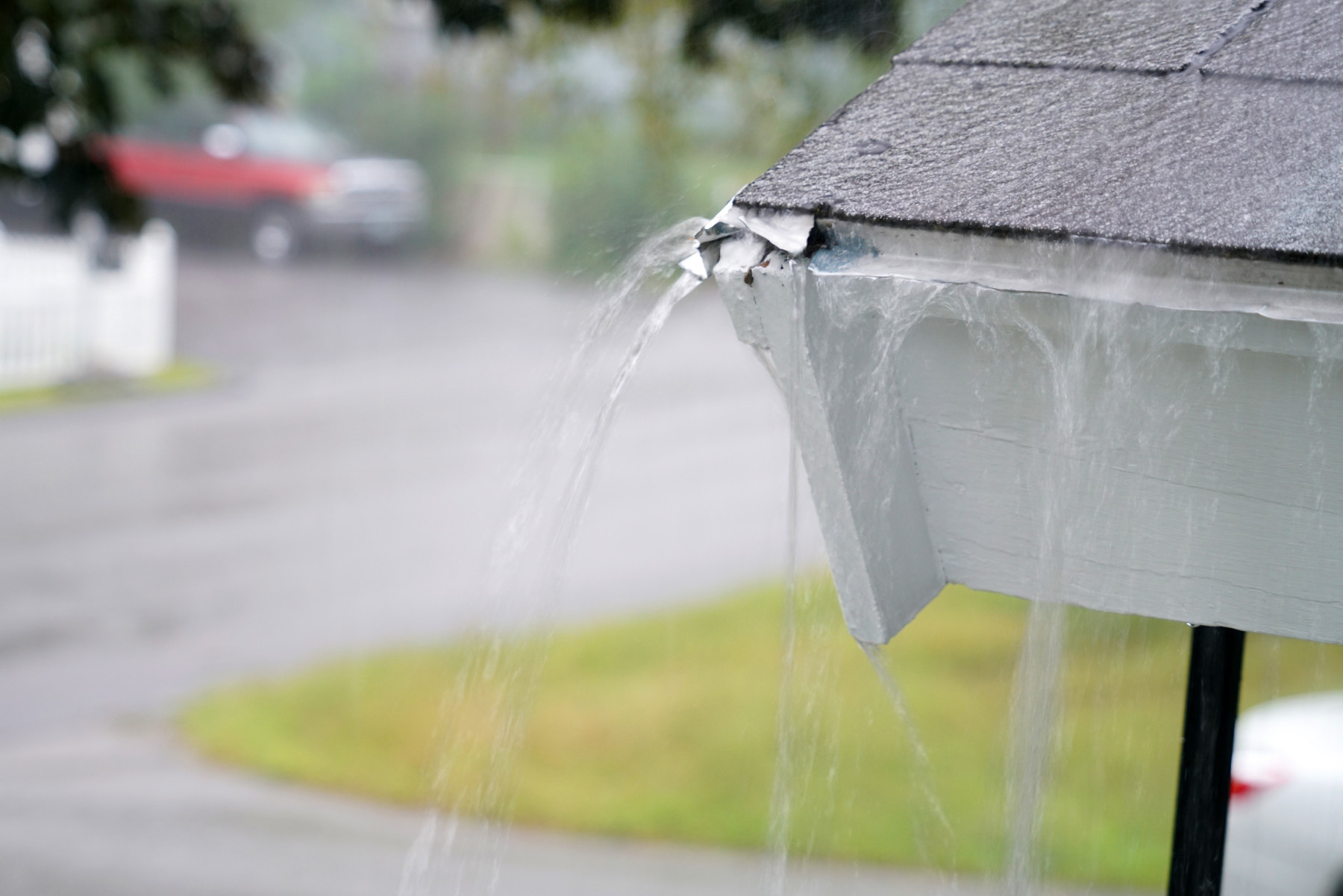
Roof Damage in Heavy Rainfall Protect Your Roof from Sustained Rain
This number will give you the number of litres of water you can expect to collect. (650ml = 0.65m3), divided by 12 = average monthly rainfall capture. e.g., 450m2 x 750ml = 337.5 (m3), divided by 12 = 28.125m3 or 28,125 litres per month average. Use the above formula for an initial calculation - our online calculator is here.

Roofing in the Rain? Integrity Roofing & Construction
How Much Rain Can You Catch with a Tarp? A 9×9-foot tarp will catch approximately 36 gallons of water during a typical rainfall, while a 10×12-foot tarp will catch about 54 gallons. However, these amounts can vary depending on how the system is set up, the intensity of the rain, and its duration.
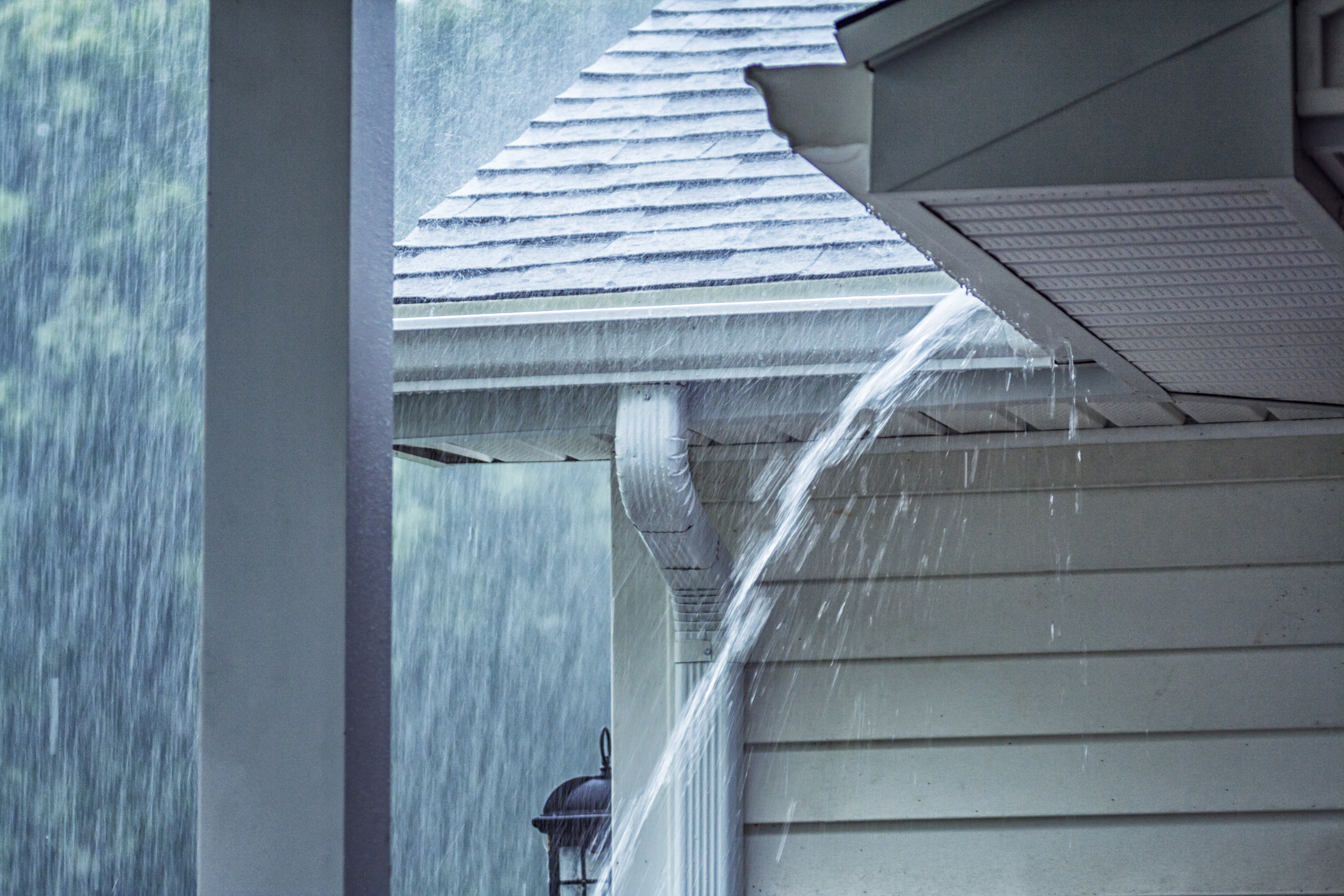
What Weather Conditions Can Affect My Roof? Welte Roofing
Rainwater Collection Calculation Formulas and Equations. Roof Area (ft2) X Precipitation Amount (in) X 0.623 = Amount Collected (gallons) Easy Formula to Remember: 1″ of Rain on 1,000 sf Roof will Yield 623 Gallons. Roof Area (m2) X Precipitation Amount (mm) = Amount Collected (liters) Wondering how much rainwater you could collect off your roof?

Rooftop Rainwater Collection System Sizes Schulte Roofing®
Roughly speaking, 1 millimetre of rain over 1 square metre of roof equals 1 litre of water. This capacity can be calculated using the following formula: Annual rainfall (in millimetres) x Roof surface area (in square metres) = Roof catchment capacity . This is an important figure to understand so you can design a Rain Harvesting system and.
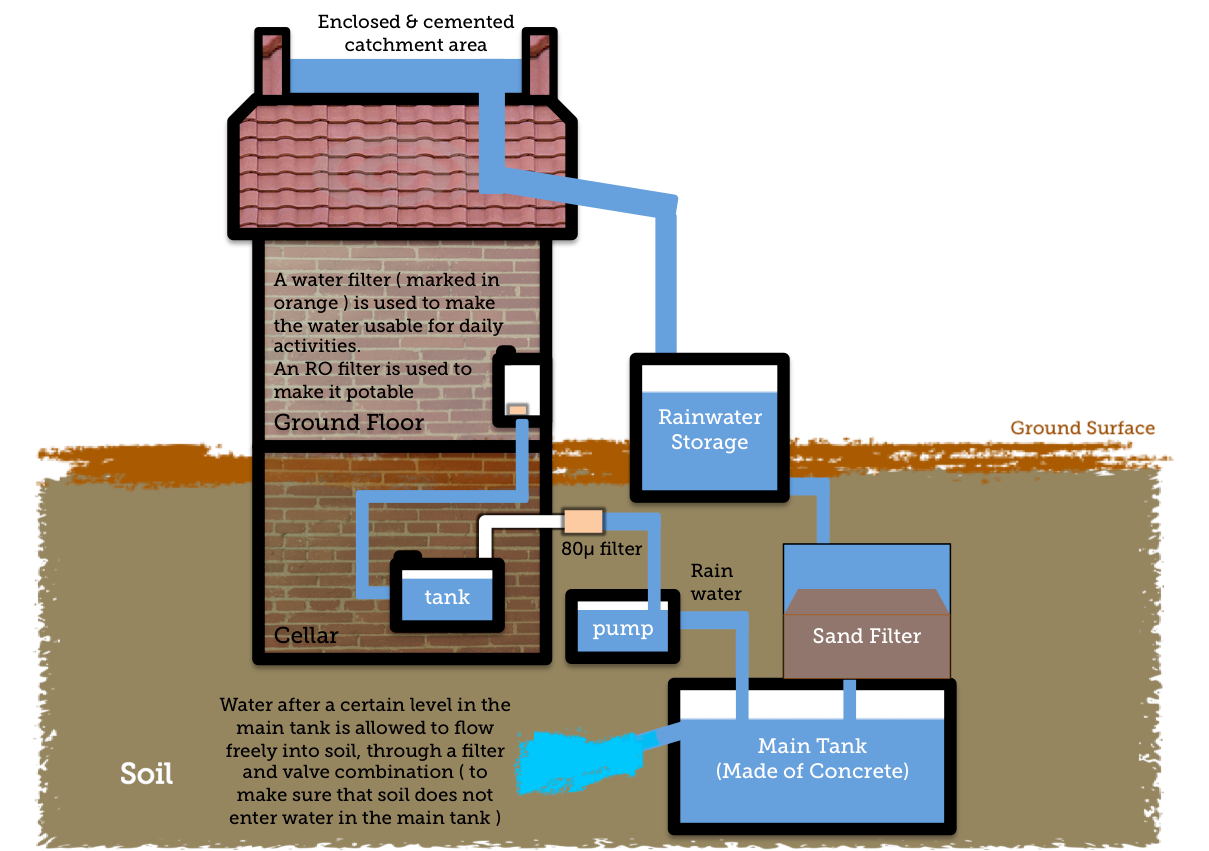
Explain the process of roof top rain water harvesting with the help of
Okay, now that we have that out of the way, to calculate how much rainwater can be harvested from your roof, use the following equation: Where does that 0.623 conversion factor come from? A cubic foot of water being equal to 7.48 gallons, which when divided by 12 (i.e. inches in a foot) equals 0.623 gallons per inch of water height.
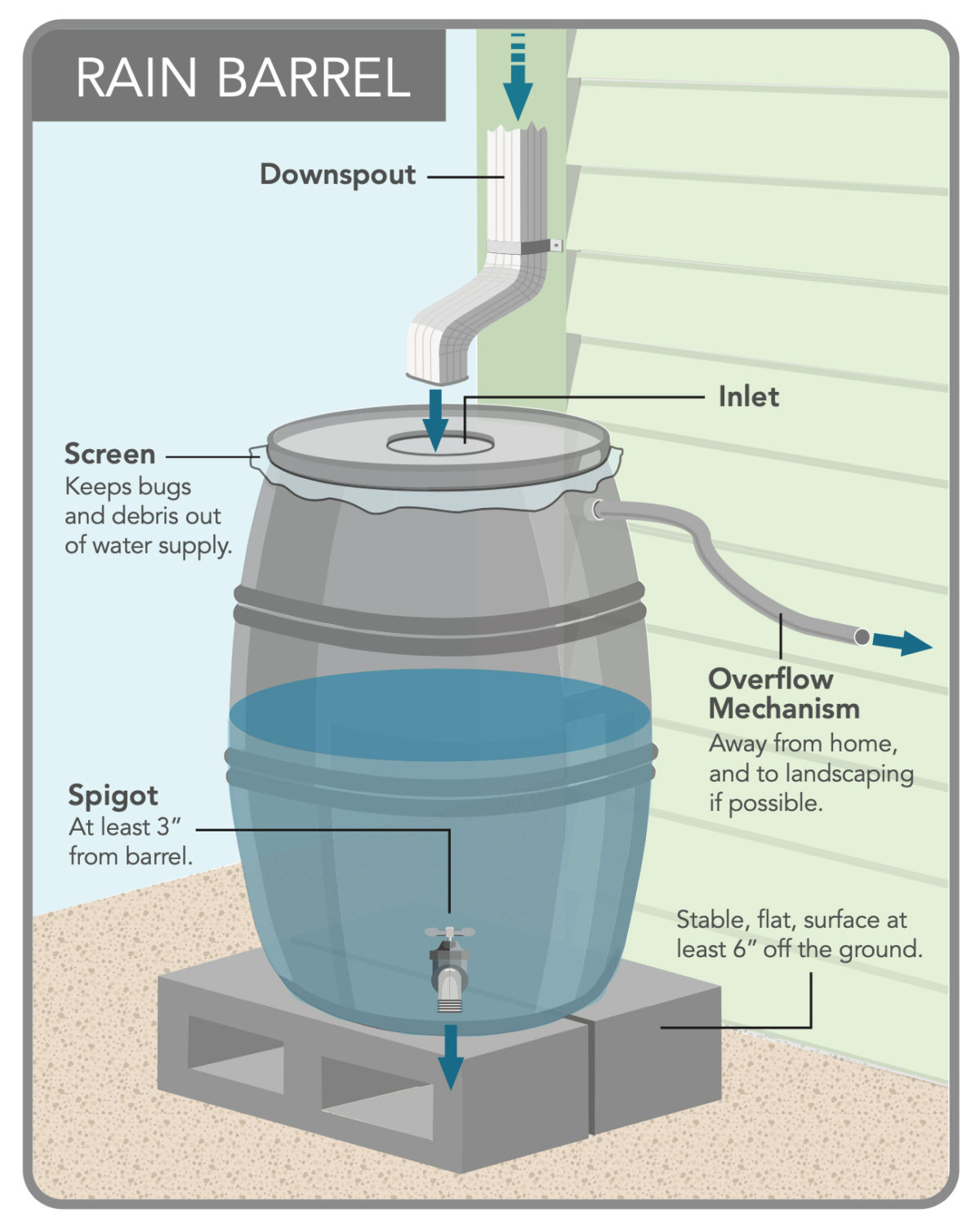
Rain Barrels Lincoln, CA Stormwater Program
A 30 foot long by 20 foot wide roof in a 1 inch rainfall but you can only collect from half of the roof Length of roof _____ feet X width of roof _____ feet X.6gallons per square ft X .75 X _____inches of rainfall = _____gallons of rainfall collected Calculate for: A roof that is 50 feet long by 20 feet wide for 34 inches of rainfall in a.

It’s Raining, It’s Pouring How to Protect Your Roof from Rain Werner
For each 1 inch of rain, a square foot of roof will capture 0.6 gallons of rainwater. However, no rainwater system is 100% efficient at capturing all of the rain which falls. A more realistic efficiency is 75% or 0.45 gallons per square foot. Roof Length and Width.
:max_bytes(150000):strip_icc()/rainwater-harvesting-system-isometric-diagram-1201105579-34cb7b27492f42c387b89fd903a16ba4.jpg)
Rainwater Harvesting A Beginner’s Guide
Step 2. Multiply the area of your roof by the amount of rainfall you wish to calculate for. For example, if you have a roof that measures 1,500 square feet, that equals 216,000 square inches. (The number of feet multiplied by 144 equals inches; 1,500 X 144=216,000.) Multiply those 216,000 square inches by the rainfall.